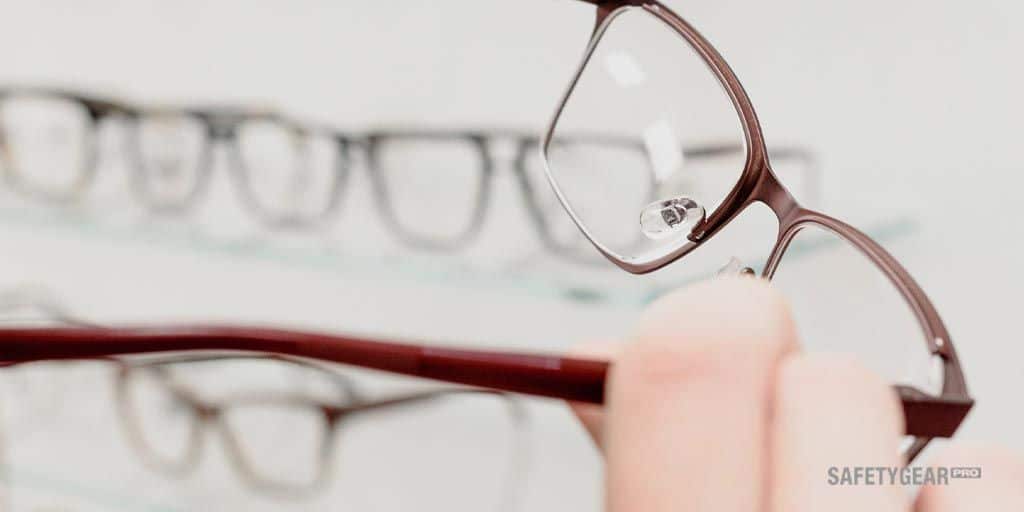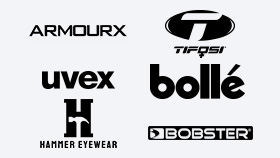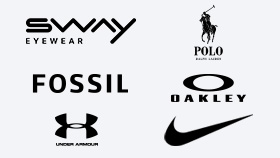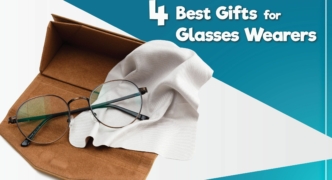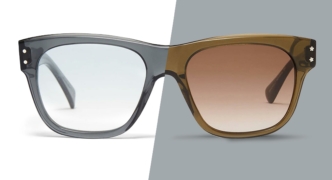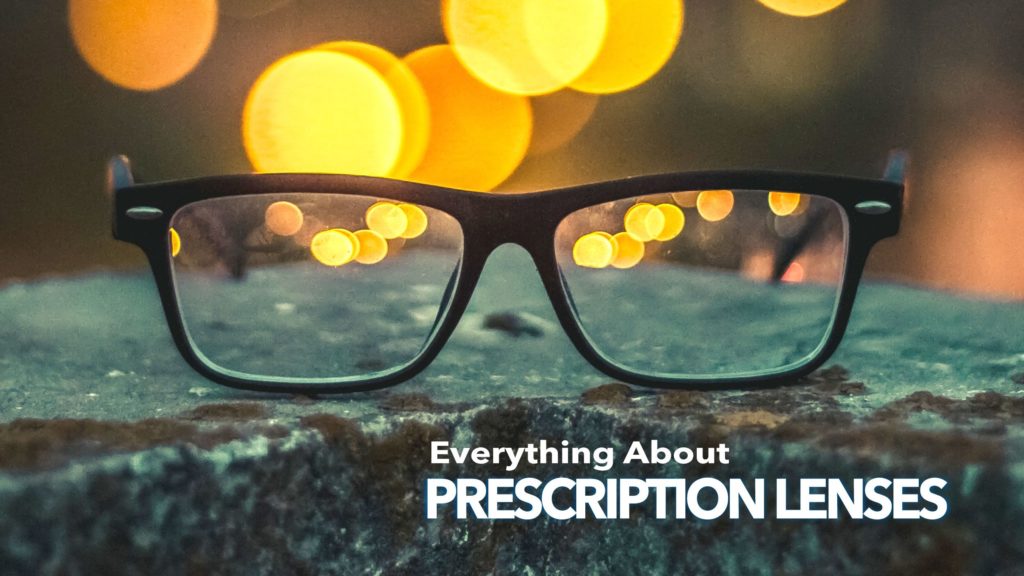
If you’ve ever looked at someone in a pair of glasses and marveled at how smart, hip or distinguished they looked, you should know that getting the perfect pair of prescription glasses isn’t easy. There is a lot that goes into the choice of frame, the lenses, the style and even the prescription itself. Rather than let you wonder about how to choose the right pair for your needs, here is everything you need to know about prescription lenses.

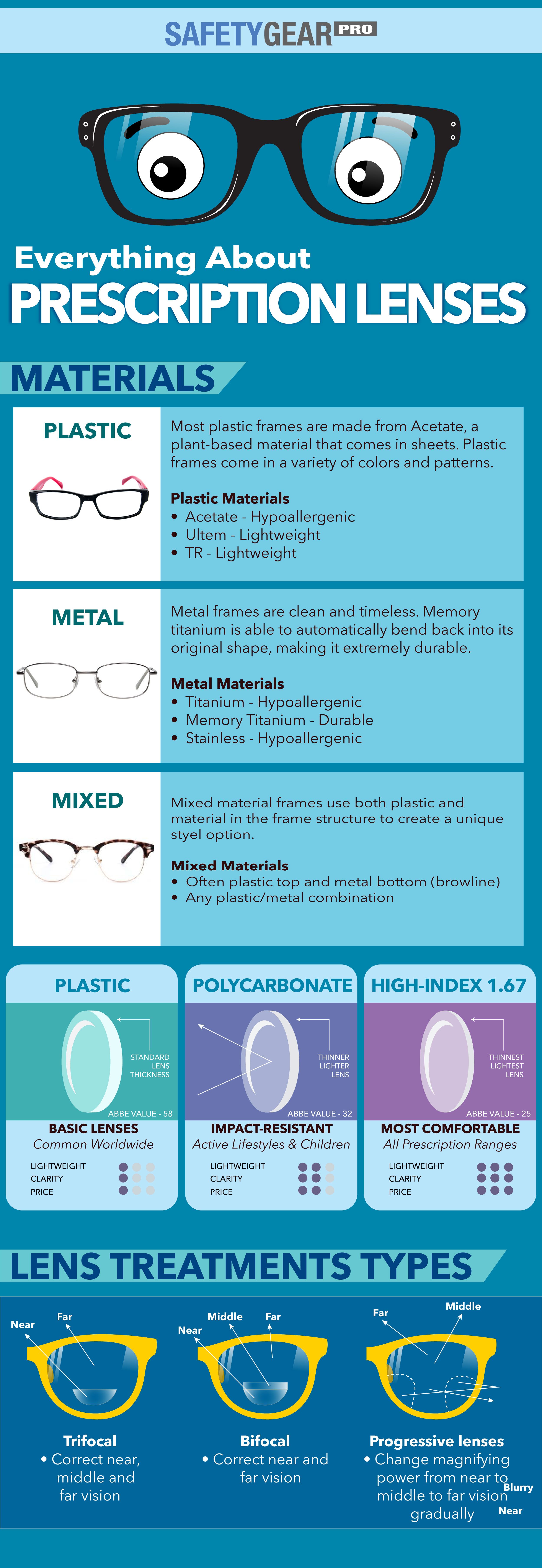
Knowing the Corrective Factors
A visit to an optometrist will reveal if you need corrective lenses, and you may have made that appointment based on a declining ability to see things clearly. Whatever the results of your eye exam may be, if you require prescription glasses, there are a few things to know about how the corrective process works. Glasses or contact lenses allow the eye to readjust light to enter the retina in the right spot, which is the location that presents the clearest image. Eyeglasses bend light to either bring objects far away, closer or to separate out problems like double vision.
Lens Strength and Type
In writing a prescription, optometrists will evaluate the strength that is needed to bend the light at a specific distance. This is called the diopters. Higher diopters indicate that a stronger lens is needed. One diopter has about a focal length of one meter. Someone with 20/20 vision is said to be able to clearly see objects at 20 feet, though there are other skills that equate to having strong visual abilities. With lens type, a plus or minus sign in front of the diopter will indicate which lens type the individual needs. Lens shapes can be spherical, compound or cylindrical.
Refraction
Eyeglass lenses are categorized according to their index of refraction. This the measurement of how rays of light are bent when moving between one medium and into another. More technically, the refractive index is the value calculated according to the ratio of the speed of light taken in a vacuum and traveling to a second medium that has a greater density. In glasses, the refractive index shows how fast light will travel through a lens (when compared to its speed through a vacuum).
A plastic lens with a refractive index of 1.498 means that light will travel that many times faster if it were in a vacuum as compared to its speed when moving through the lens. Optical lenses are put into four categories:
- Normal Index: 1.48-1.54
- Mid Index: 1.54-1.64
- High Index: 1.64-1.74
- Ultra High Index: 1.74 and higher
Abbe Value
Abbe value is the measurement of the lenses’ ability to disperse light. With a low abbe value, there is a higher dispersion and distortion occurs as the lens can’t focus all of the colors on a single point. The higher the abbe value, the better the quality and clarity of vision the lens produces. There are complaints about seeing colored fringes around people or objects when the abbe value is quite low in their lens material.
Polycarbonate has an abbe value of 30, which makes it the lowest all of the available materials to make an optical lens. This means it is the worst in considerations of integrity and clarity. Glass has one of the highest abbe values, but the density causes these lenses to be heavy. Abbe value requires a delicate balance in prescription eyewear, as clarity is important, but so are appearance and material weight.
Lens Thickness
Many people wonder how thick their glasses will be since lens thickness can seem to distort the look of the eye or become a visual distraction to appearance. There is no standard answer as to how your lenses will look, though there is a minimum center thickness requirement for your lens material. The minimum center thickness and minimum edge thickness relate to the plus or minus of the prescription, as well as the impact resistance of the material when it is in its final form.
Selecting the Material
Before you can worry about the color or style, you need to consider the material that will form the lenses. The type of material won’t impact how well the prescription will correct your vision, but it does play a part in how convenient it is to wear your glasses during your daily routine.
Glass Lenses
Glass is the oldest material used for corrective eyewear, and it has an impressive refractive index that goes as high as 1.9. These lenses hold up well against scratches and have good results with strong prescriptions. The lenses can also have anti-glare and tints added to protect from the sun, but these glasses tend to be much heavier and more susceptible to shattering.
Plastic Options
Technology has changed the way plastic lenses are created for use in eyewear. Currently, most materials are high-tech plastics that won’t break as easily as glass, are more lightweight and can have special coatings applied to create additional protections.
High-Index Lenses
With a high-index lens, manufacturers use a special plastic material that refracts light differently than plastic lenses. The lenses are much thinner, as less material is needed during construction. Plastics are graded according to their number, and the higher the number, the thinner the resulting lens will be. The thinner the lens, the more comfortable and lightweight the lenses will be to wear.
Those who require strong or high prescriptions may prefer high-index lenses in order to maximize a sleek, attractive look with glasses. Other options may leave the wearer with thicker lenses that are more noticeable. High-index lenses are usually more expensive than a standard plastic lens.
Polycarbonate Lenses
More impact-resistant than traditional plastic lenses and definitely more safe than glass options are polycarbonate lenses. In addition to this safety feature, polycarbonates are also thinner and more lightweight. There is the added benefit of UV protection built into the lens, which makes these lenses ideal for those who wear safety glasses at work or who have an active, outdoor lifestyle. The impact resistance and UV protection also make this a great option for children’s eyewear.
Not everyone is able to wear polycarbonate lenses, as those who deal with high astigmatism or who have high prescriptions may experience some distortion or a color-ring/halo effect in their peripheral vision. The is attributed to the low abbe value of the lenses.
Aspheric Lenses
High-index lenses can be modified to include an aspheric design, which creates a much thinner lens and visual profile. Rather than having a spherical curve on the front surface of the lenses, the curve begins in the middle of the lens and moves outward toward the perimeter. The plus or minus factors of lens type indicate how steep the curvature of an aspheric lens will be. The strength is displayed throughout the entire lens and not just at the center where the curvature starts.
These lenses make is possible for those with high prescriptions to have a wider selection of frame choices without the appearance of looking “bug-eyed” or having a lens that extends past the frames. The nature of aspheric design lends itself to inclusion with high index lenses but they can be used with lower index plastics as well.
Realizing the Impact of Frame Selection
When it comes to selecting your material for a lens, you also need to consider the frame that will hold the lenses. Smaller frames will have lenses that are thinner, though the higher the lens index the more this is true as well. Choosing a well-centered frame can reduce how much the lenses weigh and how thick they are, which is a positive thing for those who have a strong prescription.
Understanding Lens Coatings
Glasses need to be comfortable and easy to wear in a number of different conditions. Prescription lenses can have protective or chemical coatings applied to help the wearer have a better experience while wearing glasses.
- Anti-scratch: a coating that makes the lenses as scratch-resistant as glass
- Anti-reflective: a coating that reducing reflections of light for more clarity and contracts especially at night (important in high-index lenses)
- UV blocking: a coating that filters out the harmful ultraviolet radiation from the sun
- Photochromic: a coating that transitions the lens to a darker shade when exposed to sunlight
Following Your Prescription
After your receive your eye exam, you will find out what kind of vision you have and what type of glasses you need. There are several options for meeting your specific vision requirements.
Single Vision
If you are considered nearsighted or farsighted, you will probably shop for single vision lenses. These will sharpen and clarify your view of objects that are either far away or close by. They cannot do both.
Bifocals
If you need assistance seeing things that up close and at a distance, you may need bifocals. These are generally for those with mild to moderate presbyopia, which is the age-related change and deterioration of your vision. The top half of the bifocal lens allows you to see faraway objects, and the bottom portion focuses on things that are close-up.
Trifocals
In these lenses, there are three sections that provide visual clarity. Those with severe presbyopia may have found that their intermediate vision (seeing things at arm’s length) has been impacted. Trifocals add this layer of correction to the lens.
Progressives
Thanks to the power of technology, you can order progressive lenses if you need bifocals or trifocals. Rather than having a noticeable line separate between the prescription changes, progressive lenses provide a more seamless look. The top portion of the glasses starts with the prescription needed to see things far away and the lens changes throughout to where the bottom is the reading prescription.
Choosing the Best Option
Having been presented with so much information, it may seem more confusing now than ever to try and choose the right pair of prescription lenses. However, many of the decisions about the prescription will be handled by the optometrist. Your choices involve the lens material and addition coatings to be applied. Your overall cost depends on the frame you select, the coatings you choose and the type of lens material you want.
In addition to wearing prescription glasses for reading or driving, consider purchasing prescription sunglasses or safety glasses as well. Your lifestyle or work environment may require the extra clarity and visual support of a prescription included in other eyewear. You will find that Safety Gear Pro carries both prescription safety glasses and sunglasses for a range of vision needs.
FAQs
Where Can I Order Prescription Glasses Online?
For a wide variety of prescription safety glasses and sunglasses, browse the selection at Safety Gear Pro. Ordering is easy, so long as you have your prescription. The pair you order will be customized to your vision needs and quickly shipped directly to you.
How Often Should I Order New Glasses?
Your vision will change over time, and physicians recommend have an eye exam every year. Depending on the result of the exam, and taking into account your desire to change the style of your glasses or accommodate lifestyle needs, you may change your glasses each year. Two years is the longest you should go with one pair.
Will I Be Wearing Glasses Forever?
There are few people who find that their vision improves over time, so the unfortunate reality is that yes, you will probably be wearing glasses for the rest of your life. However, there are advancements in surgery and lens crafting that benefit those with poor visions. Contact lenses and laser eye surgery are other alternatives.
Can I Get Prescription Glasses Without an Eye Exam?
Your vision problems may not require a prescription pair of glasses, though having an eye exam provides screening for treatable disease in addition to visual challenges. Reading glasses, safety glasses and blue light glasses can be purchased without a prescription, though each pair has a different function.
Does My Vision Limit My Frame Choice?
There are some lenses that require a specific style of frame in order to provide maximum viewing range. Frames that are too small will narrow down the field of vision in special lenses like progressives. An optician can help you decide which frames will suit your lens needs and face shape.
